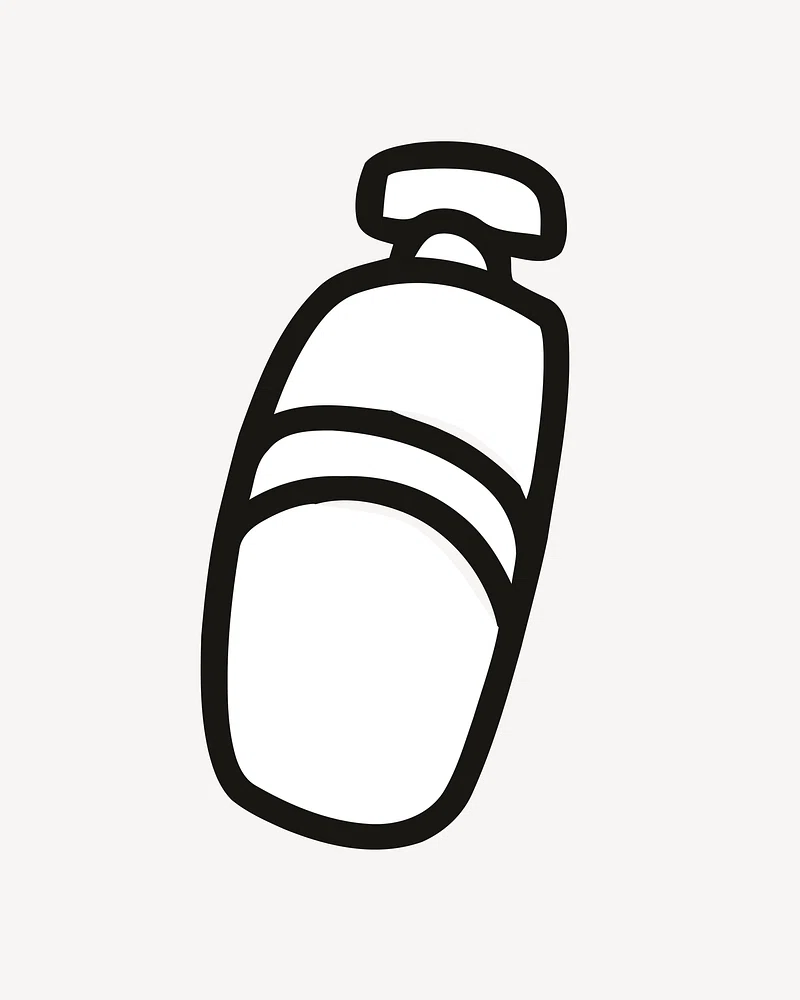Here is a quick guide on how you can understand and differentiate elements, compounds and mixtures with common examples!
When learning about the topic on elements, compounds and mixtures, remember that elements and compounds are pure substances, mixtures are impure substances.
Elements 🔥 , Compounds 🧪, Mixtures ☕️
-
Elements🔥
-
Compounds 🧪
-
Mixtures ☕️
Elements🔥
Elements are pure substances that contain only one type of atom. You can also refer to them as the building blocks of matter (just like how cells are the building blocks of life) – and therefore cannot be broken down further into simpler substances chemically.
In our natural environment/surroundings, elements can be found as a single atom, or have a group of atoms – a molecule of elements.
These single atom elements are called monatomic (mono stands for one) – and examples of these include your noble gases – Helium, Neon, Argon, etc. (which are stable and unreactive on their own)
Molecules of elements, on the other hand, is when two or more atoms of the same types are chemically combined.
When two atoms are joined together in an element, it is called diatomic – a few examples of these include oxygen, hydrogen, nitrogen,etc.
When three atoms of the same type are joined together in an element, it is called triatomic (example: O3 – Ozone)
Four and above = Polyatomic (example: S8)
Elements are split into three types: Metals, Non- metals and Metalloids.
Metals, Non- metals and Metalloids
Let’s take a look at our trusty periodic table of elements here:
I have annotated it slightly to include some relevant details to this chapter:
- Stairs of Separation → this is the line of division between the metals and non-metals.
- The big block outlined in red are your metals, the ones underlined in blue are your metalloid, and the ones in purple are your non-metals
Here is a brief summary of the differences between the three:
| Metals | Non-Metals | Metalloids |
| Shiny | Dull | Have both metal and non metal properties (can be dull or shiny) |
| Malleable & Ductile | Not Malleable & Ductile – brittle | |
| High Boiling Point & Melting Point | Low Boiling Point & Melting Point | |
| Good electrical and heat conductor | Poor electrical and heat conductor/Good insulator |
Remember that Metalloids usually have properties of metals and non-metals, while the properties of metals are usually the opposite of non-metals.
Metal
Some key characteristics to remember for metals are that they are:
Malleable – This means that they can be hammered into shape. When you think about metals, consider how a blacksmith uses a mallet/hammer to craft your favourite metal item – like crafting a nice sword.
Ductile – This means that they can be pulled/drawn into thin wire. Remember that many of our household appliances run on electricity, and this is usually done so with the use of electrical wiring – one common example for this is copper.
High Boiling and Melting Point – I think a good example of this is how most kitchen appliances that involve heating have some form of metal in it (stainless steel pots and pans, electric kettles)
In the same line of thought, they are also good electrical and heat conductors.
For example, the metal heating element within an electric kettle (as shown below), must be able to conduct heat and electricity well.
The heating element within the kettle receives electricity from a power source, which is then used to quickly heat up the contents inside the kettle. At the same time, it must have a high boiling and melting point,so that the metal will not melt and seep into the water, contaminating the water and making it unsafe to drink.
Source:Meganbeckett27, CC BY-SA 3.0 <https://creativecommons.org/licenses/by-sa/3.0>, via Wikimedia Commons
Compounds 🧪
Compounds refers to a substance where two or more elements are chemically combined together.
Do take note that there is a distinction between the definition for molecules vs compounds, as compounds are made up of different elements, while molecules can be made up of atoms of the same type (molecules of elements) or atoms of different types (molecules of compounds).
Ionic Compounds are formed between two ions – a cation (positive)and an anion (negative).
A common example we think about is our household table salt🧂.
NaCl is the chemical formula for Sodium Chloride (more commonly referred to as salt), which is an ionic compound that is formed by a sodium cation (Na+) chemically joined to a chloride anion (Cl-). As you can see, the charges from the positive sodium ion and negative chloride ion cancel out to form NaCl.
Covalent Compounds, on the other hand, refer to molecules. Molecules of compounds usually refer to non-metals that are chemically joined together (For example: H2O🚰)
Mixtures ☕️
Mixtures are substances which are not chemically combined and can be separated using physical means.
Common Examples of Mixtures
To illustrate the concept of mixtures, here are some common examples that can be found in nature:
1. Air
Air contains different elements and compounds at different proportions. Some of the more notable proponents of air include: Nitrogen gas, Argon Gas (noble gas), Oxygen & Carbon Dioxide
Some interesting examples to take note of will be:
-
- Air in the atmosphere can be separated physically to produce oxygen, which is used in oxygen tanks - for divers 🤿
-
- Air does not have a composition by mass - for example, during/after a strenuous run, we breathe in more oxygen from the atmosphere and breathe out more carbon dioxide to the atmospheric air, changing the proportion of gases in air
-
- Air will have the same properties as mixtures and have a wide range of boiling points and melting points (of its constituent elements and compounds)

2. Seawater/salt solution
Seawater contains a lot of different particles mixed together, but two of the main components are water (H2O) and salt (NaCl). Therefore, we can actually extract two things at once from seawater - collecting sea salt from seawater, and removing salt from seawater for further purification to make freshwater.
Source:Anderson sady, CC BY-SA 3.0 <https://creativecommons.org/licenses/by-sa/3.0>, via Wikimedia Commons
You can harvest salt at salt evaporation ponds (as shown above), or at a desalination plant.
This example illustrates how a mixture can be separated physically (using methods of evaporation by sun) as well as how mixtures have the same properties as its constituents.
Mixtures vs Compounds
The main difference between compounds and mixtures is that compounds are chemically combined together, and therefore can only be separated by chemical means. On the contrary, mixtures are NOT chemically combined and can be separated using physical means. This includes filtration, evaporation to dryness, etc.
One of the examples I use is a hot coffee beverage. How do you make one? That involves adding a few scoops of coffee powder to hot water. – which will form a solution!
In order to recall the properties of mixtures vs compounds, what I would like to do is come up with an interesting example and slowly branch out the different properties from there.
Comparing the properties of mixtures & compounds
| Mixture | Compound | |
| Example | Coffee Drink (Coffee powder mixed with Water) | Water (H2O) |
| Composition by Mass | Mixture does not have a fixed composition by mass | Elements are found in fixed proportions, compound has fixed composition by mass |
| Properties of substance | The constituents still retain their individual properties (Mixture has the same propertiesas its individual components) | Has its own properties – different from the elements it was formed with |
| Separation Method | Can be separated physically | Separated by chemical means |
| MP/BP | Melting & Boiling over a wide range of temperatures | Melting & Boiling over a Fixed temperature |
Using the above example, we can recall that coffee is a mixture made up of two things: water (which is H2O), and coffee powder (a mixture), which contains many different compounds – including caffeine.
1. Composition by Mass
Mixtures do not have a fixed composition by mass. When brewing the hot beverage, you can use different proportions of powder to water, depending on what suits your taste. On the other hand, water is a compound which will always be known as H2O – as it has one oxygen atom chemically bonded to two hydrogen atoms.
2. Properties of Compounds/Mixtures
The coffee drink will retain the properties of the substances in it. The water in the coffee will still boil at 100℃. You will find that even after the coffee powder has dissolved in the water, some of the powder may remains in its solid state (as sediment at the bottom of the cup).
On the other hand, water has its own properties, different from that of hydrogen and oxygen. Firstly, Water has a boiling point at 100℃, while hydrogen and oxygen have a negative boiling point (approximately -253℃ & -182℃ respectively).
Secondly, water is in liquid form at room temperature, while hydrogen and oxygen are in gaseous state.
3. Boiling/Melting Point
As mentioned previously water has a fixed boiling point of 100℃ and a melting point of 0℃.
Mixtures have varying boiling and melting points. For coffee itself, water boils at 100℃, while the coffee powder itself will have a different boiling point.
4. Separation Method
For example, if you put loads of coffee powder into hot water, you might not dissolve all the powder fully. In this coffee drink + powder mixture, you can filter out the extra grains of powder physically using a filter funnel.
Revision
If you feel that everything is a tad bit confusing, check out this article on atoms, ions and molecules for a quick crash course!
Concluding Thoughts
All in all, these are just some of the interesting examples that I have found, which I felt have made this topic less mundane in my eyes. I believe that making learning relatable is more effective than forcefully remembering facts and regurgitating them out during exams.
If you found this helpful, do share it with other people who might benefit from it, and let me know if I have missed out on anything~
